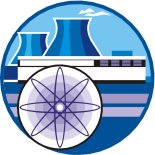
Worksheets and No Prep Teaching Resources
Reading Comprehension Worksheets
Earth Science

Earth Science
 Worksheets and No Prep Teaching Resources Reading Comprehension Worksheets Earth Science |
 Earth Science |
| edHelper's suggested reading level: | grades 9 to 10 | |
| Flesch-Kincaid grade level: | 9.49 |
| Print It's All Nuclear! (font options, pick words for additional puzzles, and more) |
| Quickly print reading comprehension |
| Print a proofreading activity |
|
It's All Nuclear!
By Trista L. Pollard |

|
 1 The idea of fossil fuels becoming extinct has crossed the minds of many geologists and scientists. During the last eighty years, they have searched for other forms of energy, specifically renewable energy.
1 The idea of fossil fuels becoming extinct has crossed the minds of many geologists and scientists. During the last eighty years, they have searched for other forms of energy, specifically renewable energy. |
Create Weekly Reading Books
Prepare for an entire week at once! |
| Leave your feedback on It's All Nuclear! (use this link if you found an error in the story) |
 |
Earth Science
|
 |
High School Reading Comprehensions and High School Reading Lessons
|